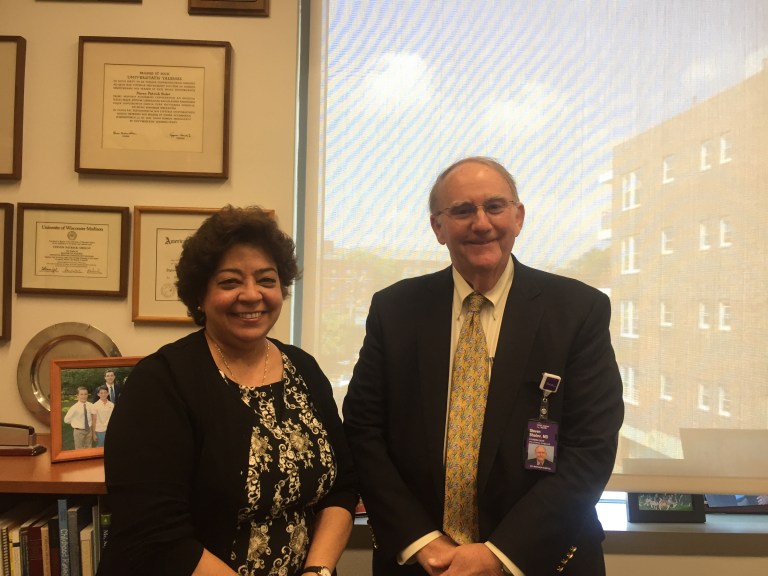
After opening its doors in Mineola July 29, the tuition-free NYU Long Island School of Medicine’s faculty already has 3,000 applications to evaluate for 32 spots for the 2020-2021 class by November, must find donors and do what it can to encourage medical students to pursue primary care in the future.
Dr. Steven Shelov, the school’s founding dean and chief academic officer, said the priority now is to locate more donors and philanthropists to maintain the tuition-free model for the medical school based in NYU Winthrop Hospital’s research center.
“It’s got to be half operations and half philanthropy,” Shelov said. He and the other leaders at the school are developing ways of finding and persuading donors to donate to the medical school. The average tuition, Shelov said, is about $55,000 per student.
Dr. Gladys Ayala, senior associate dean for medical education, said that the cost of attendance is about $27,000-$28,000 in addition to the tuition and still needs to be covered either by the student or federal loans. Ayala said it is important to “lessen that debt.”
The medical school follows the model of the NYU School of Medicine, which allowed all enrolled students to attend the school with their tuition fees covered by scholarships in 2018. School officials say that this model is designed to inspire medical students to pursue primary care
“We recognize that students when they do come out of medical school with very high debt, they may not normally choose some of these primary care fields because they don’t pay as much as the more lucrative specialties,” Ayala said.
Ayala said the funding for the school comes from revenue generated by the NYU Langone health care network as well as philanthropy, or donors, to support tuition scholarships for the students. NYU Winthrop and NYU Langone Health recently announced a full-asset merger, combining the hospital and the medical school it houses as part of the health care center.
Shelov said that when Winthrop was purchased by NYU in 2017, New York University decided that instead of being a regional campus for NYU, it would be its own separate medical school with a focus on primary care. Shelov was originally near retirement before taking on the head academic role at the medical school.
After the NYU Medical School students were surprised by the announcement in July 2018 that their tuition would be covered by NYU, Shelov said NYU Langone Health CEO Robert I. Grossman decided that the same model could be used for the medical school at NYU Winthrop Hospital. Unlike the Manhattan school, however, the students for the Long Island facility were aware of the tuition-free model by the announcement in February 2019.
Ayala, a trained general internist, said that lessening the debt for medical students is important to ensure a future of family practitioners, pediatricians, general internists, OB/GYN doctors, and general surgeons.
Dr. Steven Abramson, the chief academic officer for NYU Langone Health, said the network has about $500 million available through donations from local philanthropists. Abramson said the money put into the school should be seen as an investment in future doctors in the network.
“NYU is committed to do this, but they want to see more money in the pot that can help pay,” Shelov said.
Shelov spoke highly of Kenneth Langone, the chairman of NYU Langone Health. Langone spoke at the school’s “white coat” ceremony July 26 and was singled out in the past for his contributions to the NYU Medical School featured in a “60 Minutes” piece. Shelov said, however, that Langone has not personally contributed to the school yet.
“He’s a wonderful, wonderful, supportive, incredible, charismatic champion for this school,” Shelov said.
The Long Island school had received over 2,400 applications for the 24 available slots this year. Shelov said they already have received about 3,000 applications for next year’s class, which will include 32 students. For the 2021-22 year, the class size will expand to 40 students and be capped at that number.
Shelov and Ayala both said other medical schools will likely follow NYU’s model to make it more affordable for students, especially ones who are interested in primary care.
“I think the [future] for medical schools is to try to reduce the debt that medical students accrue,” Ayala said.
“We have to generate a capital of dollars to fund this tuition-free status forever,” Shelov said.






